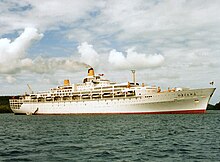
SS Canberra was an ocean liner, which later operated on cruises, in the P&O fleet from 1961 to 1997. She was built at the Harland and Wolff shipyard in Belfast, Northern Ireland at a cost of £17 million. The ship was named on 17 March 1958, after the federal capital of Australia, Canberra. She was launched on 16 March 1960, sponsored by Dame Pattie Menzies, wife of the then Prime Minister of Australia, Robert Menzies. She entered service in May 1961, and made her maiden voyage starting in June. In the 1982 Falklands War she served as a troopship. In 1997 the singer and songwriter Gerard Kenny released the single "Farewell Canberra" which was specially composed for the last voyage.

P&O was a British shipping and logistics company dating from the early 19th century. Formerly a public company, it was sold to DP World in March 2006 for £3.9 billion. DP World currently operate several P&O branded businesses, P&O Ferries, Istithmar P&O Estates, and P&O Maritime Logistics. It also operates P&O Heritage, which is the official historic archive and collection of P&O.
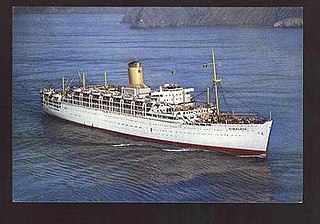
SS Himalaya was a British passenger ship of the Peninsular and Oriental Steam Navigation Company, launched in 1948, which operated mainly between Britain and Australia. She was withdrawn from service in 1974 and scrapped the next year.

SSOriana was the last of the Orient Steam Navigation Company's ocean liners. She was built at Vickers-Armstrongs, Barrow-in-Furness, Cumbria, England and launched on 3 November 1959 by Princess Alexandra. Oriana first appeared as an Orient Line ship, with a corn-coloured hull, until 1966, when that company was fully absorbed into the P&O group. Faced with unprofitable around-the-world passenger routes, the P&O white hulled Oriana was operated as a full-time cruise ship from 1973. Between 1981 and her retirement from service five years later, Oriana was based at Sydney, Australia, operating to Pacific Ocean and South-East Asian ports. Deemed surplus to P&O's requirements in early 1986, the vessel was sold to become a floating hotel and tourist attraction, first in Japan and later in China. As a result of damage sustained from a severe storm whilst in the port of Dalian in 2004, SS Oriana was finally sold to local breakers in 2005.

MV Piano Land is a cruise ship in service for Astro Ocean, a newly-formed Chinese cruise line. She originally entered service in April 1995 as Oriana for P&O Cruises, and was named by Queen Elizabeth II. She was built by Meyer Werft at their shipyard in Papenburg, Germany, and measures 69,153 gross tons. As Oriana, she held the Golden Cockerel trophy in recognition of being the fastest ship in the P&O Cruises fleet from 1997, when she succeeded her fleetmate Canberra, to her departure in 2019.

Arthur Anderson was a Scottish businessman and Whig politician. He was co-founder of the Peninsular and Oriental Steam Navigation Company (P&O).

P&O Cruises is a British cruise line based at Carnival House in Southampton, England, operated by Carnival UK and owned by Carnival Corporation & plc. It was originally a subsidiary of the freight transport company P&O and was founded in 1977. Along with P&O Cruises Australia, another former subsidiary of P&O, it has the oldest heritage of any cruise line in the world, dating to P&O's first passenger operations in 1837.

SS Otway was a UK steam ocean liner owned by the Orient Line, built by Fairfield Shipbuilding and Engineering Company of Glasgow, Scotland, launched in 1908 and completed in 1909.

SS Oronsay was the second Orient Line ship built after World War II. A sister ship to Orcades, she was named after the island of Oronsay off the west coast of Scotland.

RMS Orion was an ocean liner launched by the Orient Steam Navigation Company in 1934 and retired from the water in 1963 after carrying about 500,000 passengers. A 23,371 ton passenger ship, the Orion was built to carry 486 first class, 653 tourist class passengers and 466 crew from Europe through the Pacific to Australia. The construction of the ship was documented in Paul Rotha's 1935 film Shipyard.

SS Orsova was a steam ocean liner owned by the Orient Steam Navigation Company. She was built by John Brown & Company at Clydebank, Scotland in 1909 to operate a passenger service between London and Australia. Her maiden voyage was 25 June 1909.

SS Orsova, was a British ocean liner, built by Vickers Armstrong in Barrow-in-Furness, England, for the Orient Steam Navigation Company for their Great Britain-to-Australia services via the Suez Canal. She was the final development of the 28,000 ton class which began with the SS Orcades of 1948 and continued with the SS Oronsay of 1951. In 1960, in conjunction with the introduction of the new larger and faster Oriana and Canberra, the fleets of Orient and P&O were combined as P&O-Orient Lines, although the Orient ships retained their corn-coloured hulls and sailed under their own house flag. In 1966, P&O acquired the balance of the Orient shares and the Orient Line was discontinued, with Orsova and her fleet mates being transferred to the ownership of the Peninsular & Oriental Steam Navigation Company (P&O), painted white and under the P&O houseflag.
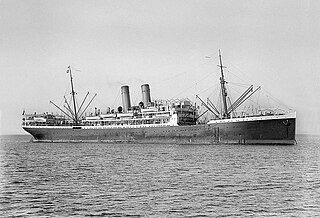
SS Orcades was built in Germany from 1903 and launched as Prinz Ludwig. She served on routes to South America until laid up in Germany during the 1914-1918 War.
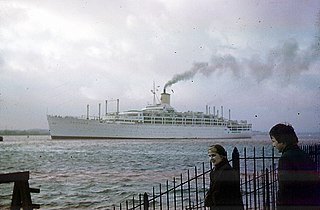
SS Orcades was an ocean liner serving primarily the UK – Australia – New Zealand route. She started service as a British Royal Mail Ship (RMS) carrying first and tourist class passengers. Orcades carried many migrants to Australia and New Zealand and was later used as a cruise ship, and is featured in the British Pathe films "I am a passenger" on YouTube. She also made several voyages from Canada (Vancouver). "Orcades" is the Latin name for the Orkney Islands.

SS Iberia was an ocean liner completed in 1954 for the Peninsular and Oriental Steam Navigation Company (P&O). Along with her fleetmates Himalaya, Arcadia and Chusan, Iberia mainly provided passenger service between the United Kingdom and Australasia.

The New Zealand Shipping Company (NZSC) was a shipping company whose ships ran passenger and cargo services between Great Britain and New Zealand between 1873 and 1973.
P&O Princess Cruises plc was a shipping company that existed between 2000 and 2003, operating the P&O Cruises, Princess Cruises, P&O Cruises Australia, A'Rosa Cruises, AIDA Cruises and Ocean Village branded cruise lines. The company was formed from the de-merged passenger services of the Peninsular & Oriental Steam Navigation Company (P&O) and operated until 2003 when it was re-listed as Carnival plc following a merger with Carnival Corporation. Its registered office was in the City of Westminster, London.

For other ships called SS Oronsay, see List of ships named Oronsay
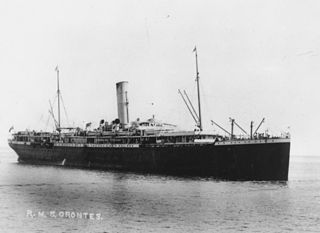
RMS Orontes was a steam ocean liner of the Orient Steam Navigation Company that was launched in 1902 and scrapped in 1925.

SS Osterley was a steam ocean liner owned by the Orient Steam Navigation Company. It was built by the London and Glasgow Shipbuilding Company at Clydebank, Scotland in 1909 for a passenger service between London and Australia via the Suez Canal.

